
Smart Gardening: Know the insects that look like bees
DOWNLOADOctober 1, 2019 - Veronica Calles-Torrez, NDSU; Esther McGinnis, NDSU; Patrick Beauzay, NDSU; Nathaniel Walton, Michigan State University Extension; Joy Landis, Michigan State University; Janet J. Knodel, NDSU
Everyone knows bees love to visit flowers, but not everything you see visiting flowers or buzzing around the garden is a bee. In fact, many insects imitate bees in order to avoid unwanted attention. Whether you call them “bee-mimics,” “wanna-bees” or “yellow-stripey-things,” most are beneficial helpers in our yards and gardens. This brief guide will help you tell some of these insects apart.
Flies
Some flies, especially hover flies and bee flies, can be mistaken for bees because their body form, color and hair patterns, buzzing sounds and behaviors mimic bees. Flies have a set of front wings (forewings), but the hind wings are small, knob-like balancing organs called halteres, so flies appear to have only two wings (Figure 1). Bees have well developed forewings and hind wings.
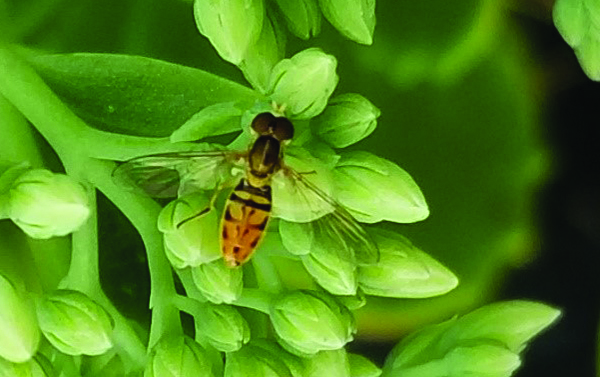
Flies have large compound eyes that occupy most of the head, while bees have narrow compound eyes on the sides of the head. Most flies that resemble bees have short, three-segmented antennae, while bees have longer, cylindrical antennae of 12 (female) or 13 (male) segments.
Some flies, especially bee flies, can be hairy like honey bees (Figure 2), bumble bees and digger bees, and can hover and move quickly from flower to flower while foraging, just like bees. Flies do not sting people.
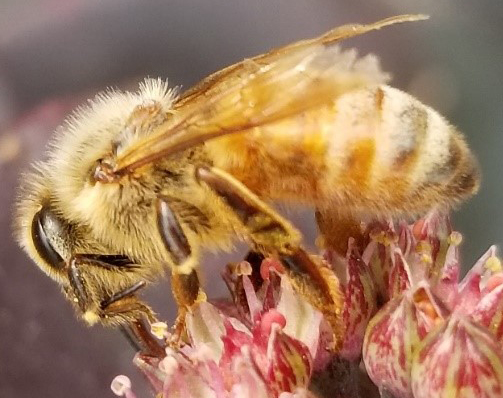
Hover flies (Family: Syrphidae)
Several hover fly species (Figures 1 and 3) resemble bees in coloration, behavior and size. Most hover flies are 5 to 15 millimeters long and have large heads with reddish or marbled black eyes, two clear wings and black and yellow color patterns on the abdomen and sometimes on the thorax. Some hover flies are quite hairy while others are not.
Hover flies buzz and hover like bees around flowers. They feed on pollen and nectar, often using the same flowers that bees do. Some hover fly larvae are aphid predators and provide biological pest control.
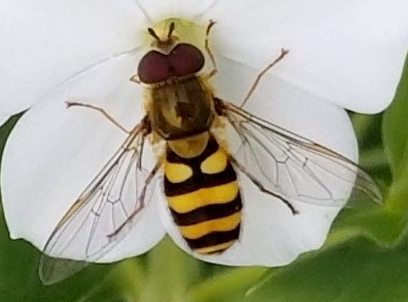
Bee flies (Family: Bombyliidae)
Bee flies (Figure 4) are about 7 to 15 millimeters long and have stout bodies covered with yellow, black or brown hairs. Different species can have transparent or patterned wings. Bee flies have a long proboscis (tongue) and feed on pollen and nectar.
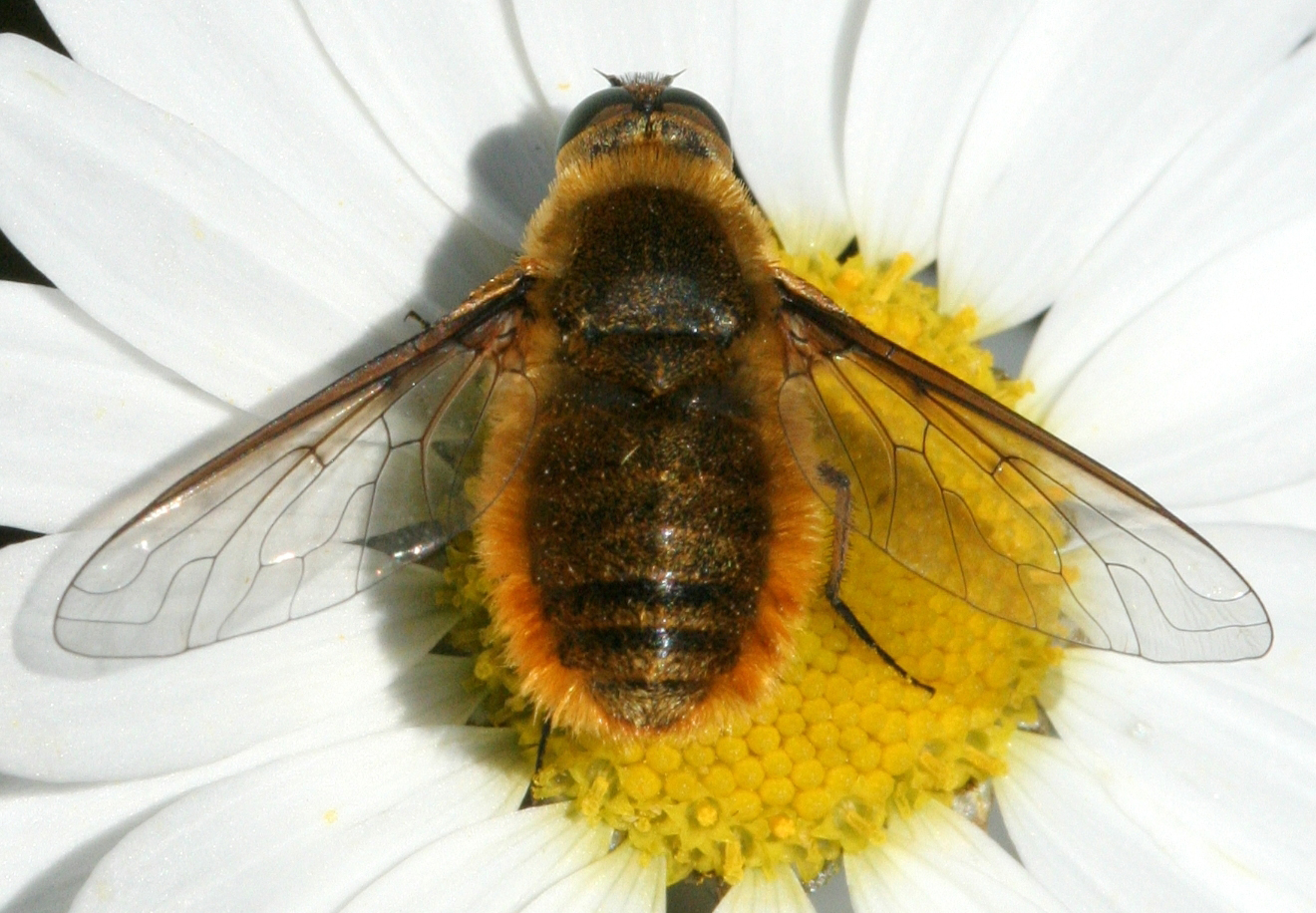
Wasps
Similar to bees, wasps have four developed wings, long segmented antennae and a distinctly visible narrow “waist” (Figure 5) due to a constriction between the thorax and abdomen. Bees also have a constricted waist, but it isn’t readily visible. Wasps are much less hairy than most bees (Figures 2 and 6). Wasps’ hairs are not branched, while bees’ are branched, but you will need a microscope to see this.
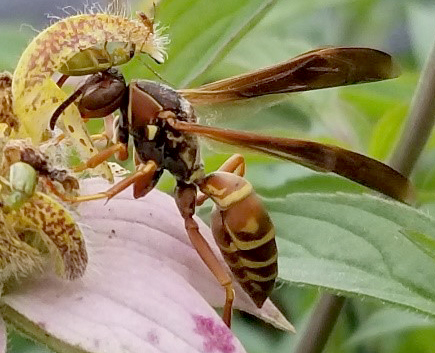
Most bees have special pollen-collecting hairs on their hind legs and collected pollen is easy to see (Figure 6). Leaf-cutting bees collect and carry pollen on hairs underneath their abdomens. Also, wasps have brighter colorations and patterns, and wider range of color and pattern variations than bees.
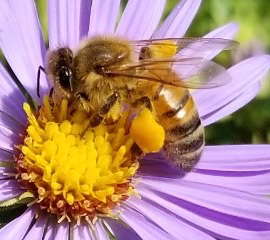
Yellowjackets, hornets and paper wasps (Family: Vespidae)
These insects are strikingly patterned with black and yellow. They hold their wings folded lengthwise over their bodies like a jet. Yellowjackets (Figure 7) are approximately 12 to 25 millimeters long. Their face is mostly yellow, except for black eyes and black antennae. Yellowjackets have yellow and black bands on the abdomen and usually nest in the ground.
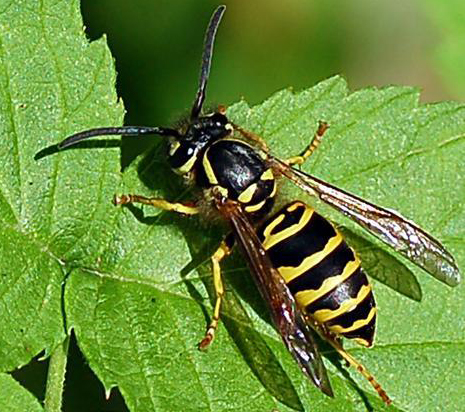
Paper wasps (Figure 5) are approximately 25 millimeters long with black, yellow and sometimes orange markings. Nests are constructed of paper, often underneath house eaves.
Bald-faced hornets (Figure 8) are black with white markings and are about 15 to 25 millimeters long. The tip of the abdomen often has white markings. Nests are constructed in trees and sometimes roof peaks. Bald-faced hornets are usually aggressive and sting when their nests are disturbed.
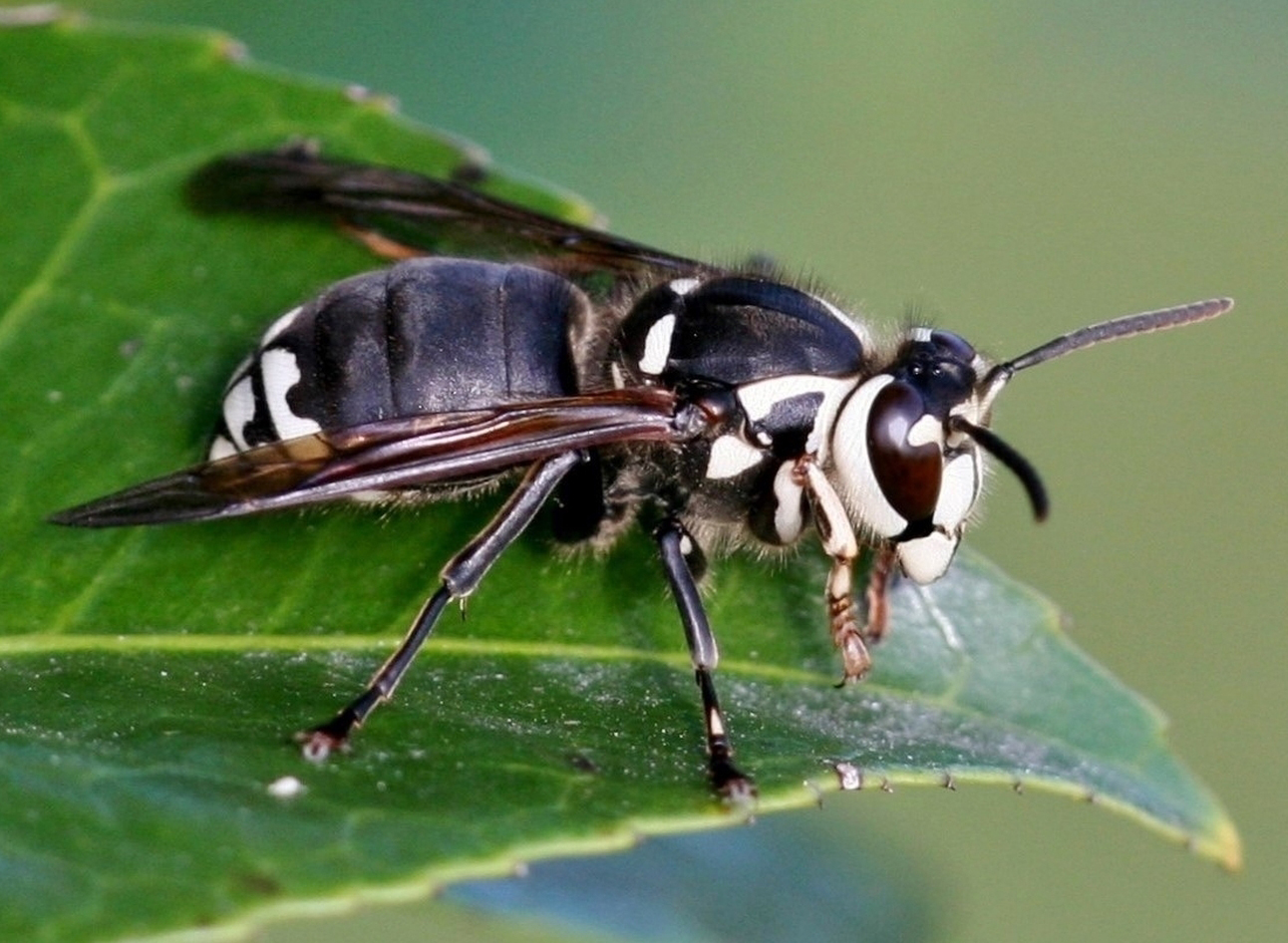
Cicada killers (Family: Crabronidae) (Figure 9) are large wasps 20 to 50 millimeters long. They have a yellow face brick-red eyes and a black abdomen with yellow bands. Wings are lightly infused with brown and the legs are red. As its name implies, Cicada killer wasps prey on cicadas. They do not have nest guarding instincts like wasps and honey bees. These impressive looking wasps are not aggressive, but females do have stingers and can sting when they feel threatened.
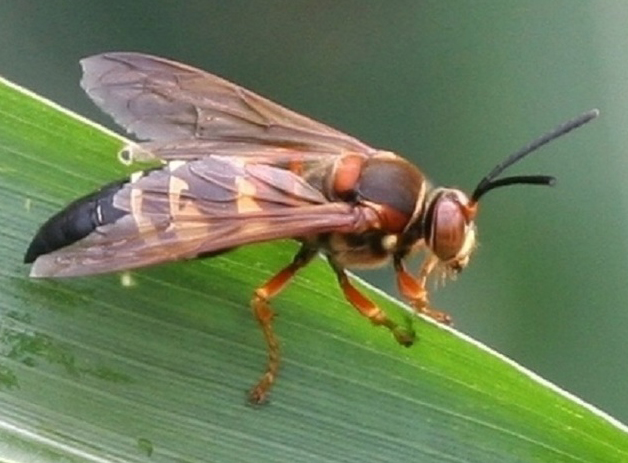
This publication is supported in part by the Crop Protection and Pest Management Program 2017-70006-27175 from the USDA National Institute of Food and Agriculture. Any opinions, findings, conclusions, or recommendations expressed are those of the author(s) and do not necessarily reflect the view of the U.S. Department of Agriculture.



 Print
Print Email
Email




